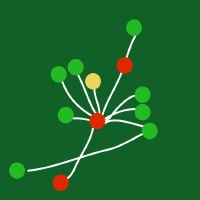Topic Menu
► Topic MenuTopic Editors


Metalloproteins and Metalloenzymes
Topic Information
Dear Colleagues,
The functioning of any biological system is impossible without metal ions. Any biological system contains proteins specifically interacting with metal ions. The ‘metals of life’ include sodium, potassium, magnesium, calcium, manganese, iron, cobalt, zinc, nickel, vanadium, molybdenum, and tungsten. Metal ions play several major roles in proteins: structural, regulatory, and enzymatic. Structural metal ions provide structural stability to proteins or protein domains. Some metal ions regulate various cell processes being first, second, or third messengers. Calcium ions are the most prominent examples of such intra- and extracellular messengers. Metal ions and especially transition metal ions are an essential part of many enzymes and are indispensable in many catalytic reactions. Despite the apparent good knowledge of the structure and properties of many metalloproteins and metalloenzymes, many aspects of their structure and, in particular, mechanisms of their functioning are still insufficiently studied. Studying their interactions with proteins of other classes, membranes, and nucleic acids allows us to reach a better understanding of their physiological functions. Modern methods of genetic engineering and knowledge of the three-dimensional structure of metalloproteins and metalloenzymes allow us to study their structure and functions on a new level. The obtained fundamental knowledge can already be used in medicine and biotechnology.
Dr. Eugene A. Permyakov
Prof. Dr. Ludmilla Morozova-Roche
Topic Editors
Keywords
- metal ions
- metalloproteins
- metalloenzymes
- structure
- regulation
- function
Participating Journals
| Journal Name | Impact Factor | CiteScore | Launched Year | First Decision (median) | APC | |
|---|---|---|---|---|---|---|

Biomolecules
|
4.8 | 9.4 | 2011 | 16.3 Days | CHF 2700 | Submit |

Cells
|
5.1 | 9.9 | 2012 | 17.5 Days | CHF 2700 | Submit |

Current Issues in Molecular Biology
|
2.8 | 2.9 | 1999 | 16.8 Days | CHF 2200 | Submit |

International Journal of Molecular Sciences
|
4.9 | 8.1 | 2000 | 18.1 Days | CHF 2900 | Submit |

Journal of Molecular Pathology
|
- | - | 2020 | 25.4 Days | CHF 1000 | Submit |

Molecules
|
4.2 | 7.4 | 1996 | 15.1 Days | CHF 2700 | Submit |

Proteomes
|
4.0 | 6.5 | 2013 | 34.2 Days | CHF 1800 | Submit |

MDPI Topics is cooperating with Preprints.org and has built a direct connection between MDPI journals and Preprints.org. Authors are encouraged to enjoy the benefits by posting a preprint at Preprints.org prior to publication:
- Immediately share your ideas ahead of publication and establish your research priority;
- Protect your idea from being stolen with this time-stamped preprint article;
- Enhance the exposure and impact of your research;
- Receive feedback from your peers in advance;
- Have it indexed in Web of Science (Preprint Citation Index), Google Scholar, Crossref, SHARE, PrePubMed, Scilit and Europe PMC.

